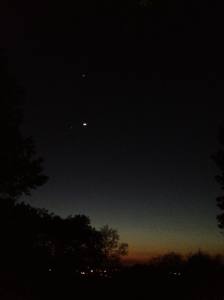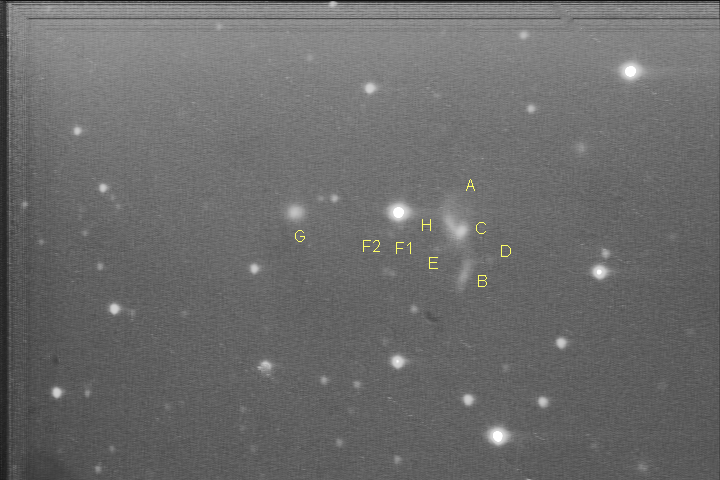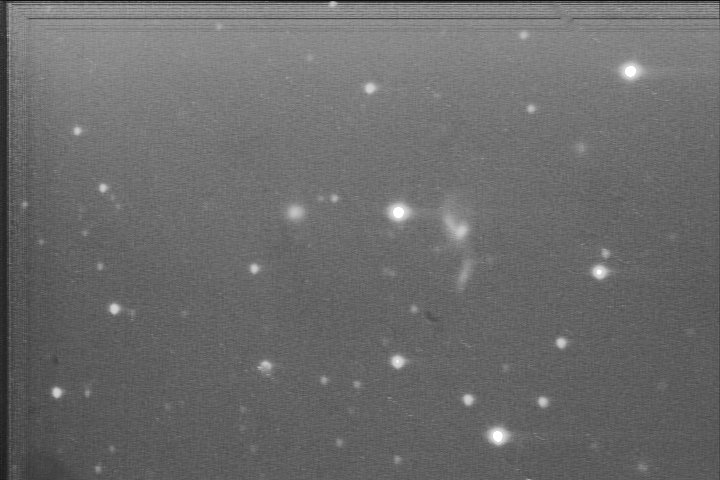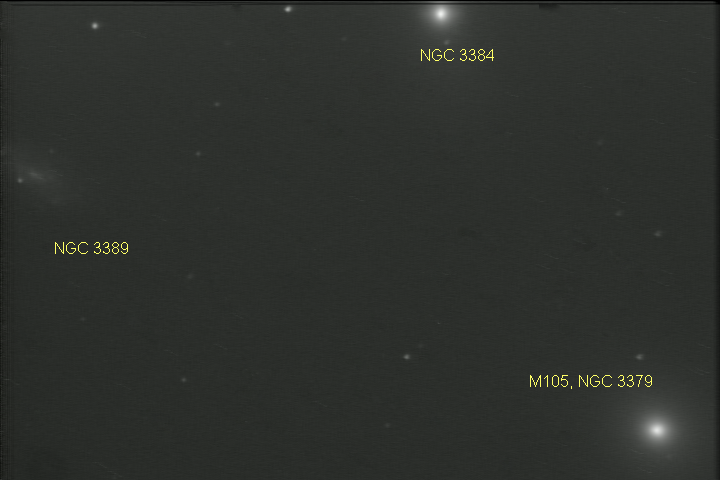
These three galaxies were used to determine the field of view of our camera, the dimensions of the field of view are 6 arcminutes in the vertical direction and 10 arc minutes in the horizontal direction. These three galaxies were captured by Mimmo Demartino and Doug Horacek on the evening of 12 April 2012 about 22:00 CDT or 3:00 UT on 13 April 2012. These three galaxies are in the constellation Leo near the heart of the Lion, Regulus.
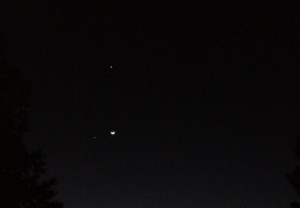
This shot was magnified and cropped to better show Jupiter, the Moon, and Venus above.
On the evening of 25 March 2012 the Crescent Moon passed close to Jupiter in the sky and above was the planet Venus. Jeff Delmas captured this view with his CCD camera. On the evening of 26 March 2012 the Moon was even with Venus and Jupiter shined below the Moon and Venus. Click on the picture to get a better View
Comet Garradd moving past a star in Ursa Minor using the 21 inch Swanson March 6, 2012.
Hickson 31 is a group of Galaxies in the Constellation Eridanus near the bright star Rigel in Orion. It is one of the most Luminous Wolf-Rayet Galaxies in the night sky. It is 166 million light years away and 150 thousand light years in extent. Hickson 31 consists of NGC 1741 A-H including F1 and F2. The cluster of galaxies form a V, the brightest one in the center is NGC 1741 C, the branching galaxy attached to C in NGC 1741 A the dimmer one with a little space, the other part of the V is NGC 1741 B and the dim galaxy below the V, just above is NGC 1741 B is NGC 1741 D. Just below NGC 1741 C are NGC 1741 E and if you look closely NGC 1741 H, and below the bright star are NGC 1741 F1 and F2 and the Larger galaxy to the left of the bright star in NGC 1741 G which is also IC 399. Note below the galaxy C is realy to the left of galaxy C. The Bright star is to the left of the brightest group.
The Leo Triplet
The Leo Triplet is generally easy to find with a small short focal length telescope, often one can capture all three galaxies in the same field of view. The Leo Triplet consists of NGC 3628, Messier 65, and Messier 66, all roughly 35 million Light Years away. The Leo Triplet is located on the back leg of Leo the Lion, about half way between Chertan and iota Leonis, M65 is right on the line connecting the two stars. NGC 3628 is the dimmest object at Magnitude 9.4, but has reasonable surface brightness, M66 is 9.7 and M65 is 10.3. Most small scopes can get M65 and M67 in the same field of view, all three are in the same field of view with a short focal length small scope. Now that spring is approaching, it is a good time to go out and find the Leo Triplet in the east, in the same part of the sky as is Mars!
